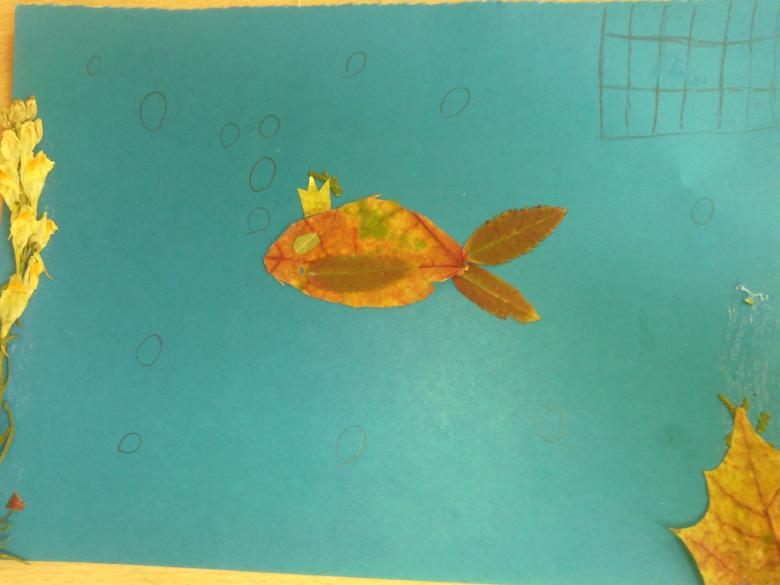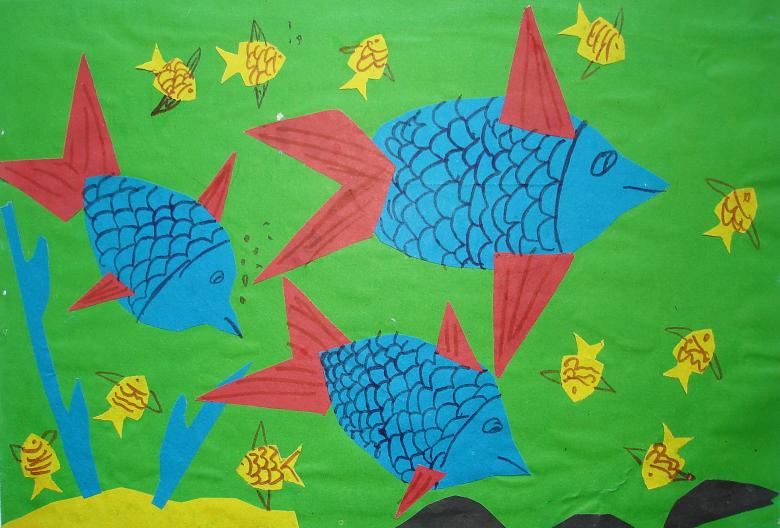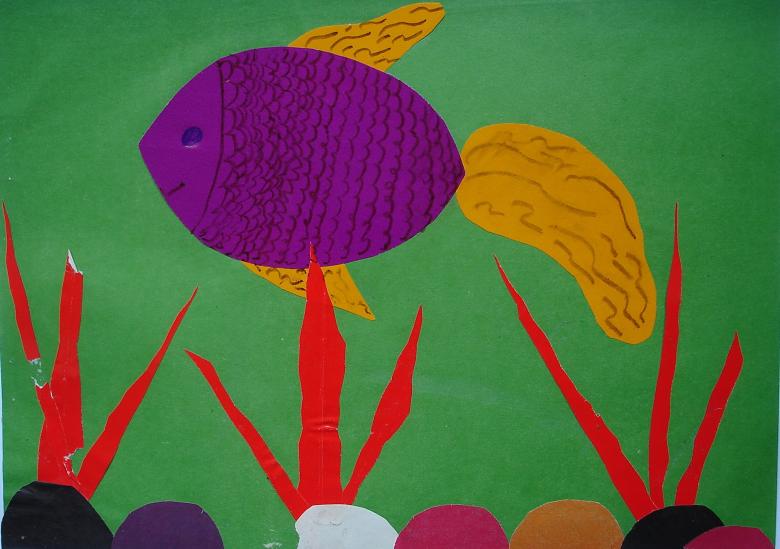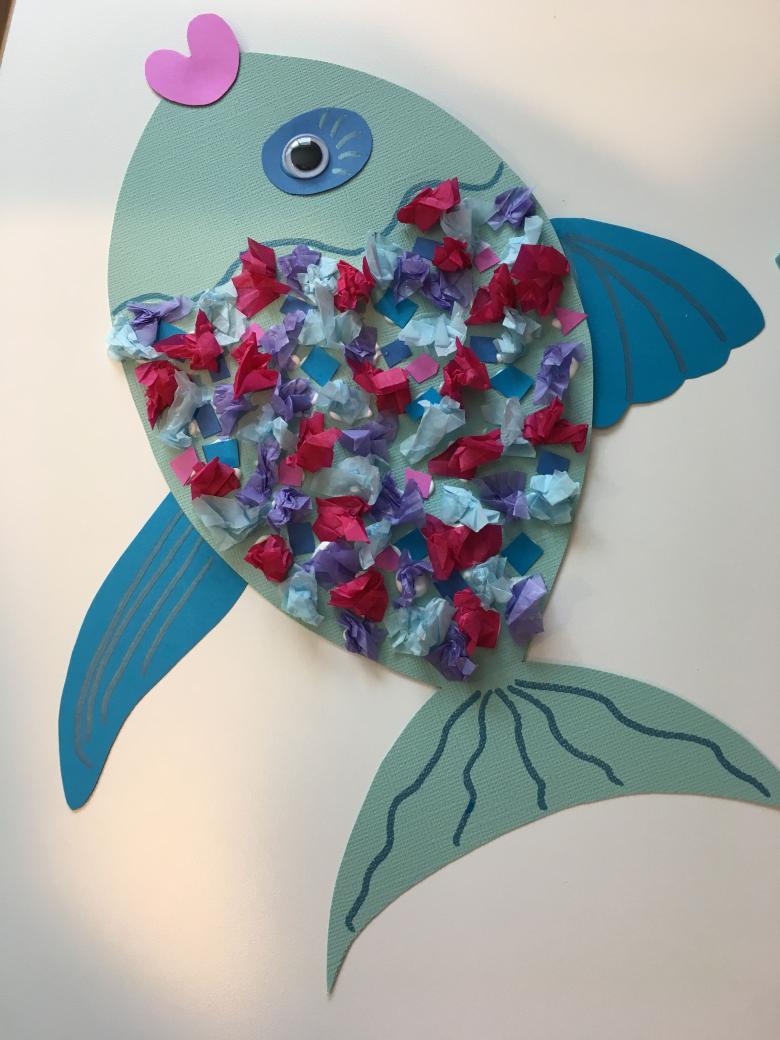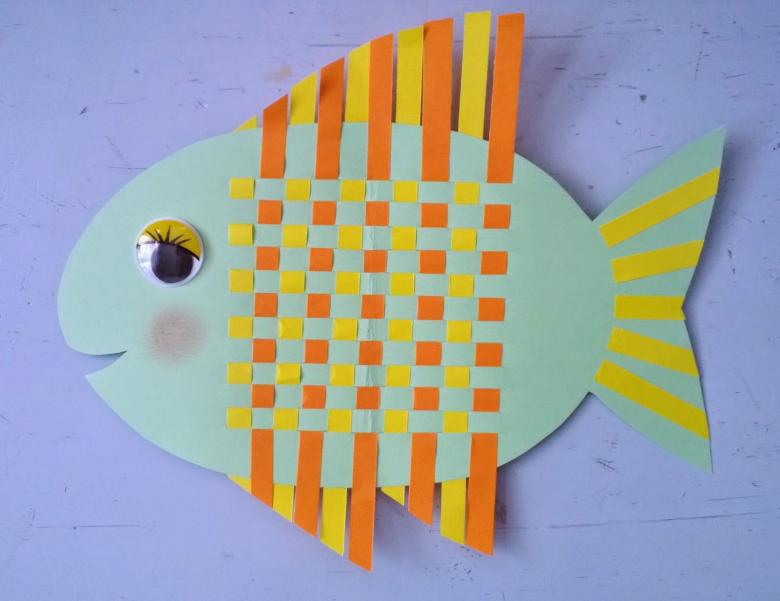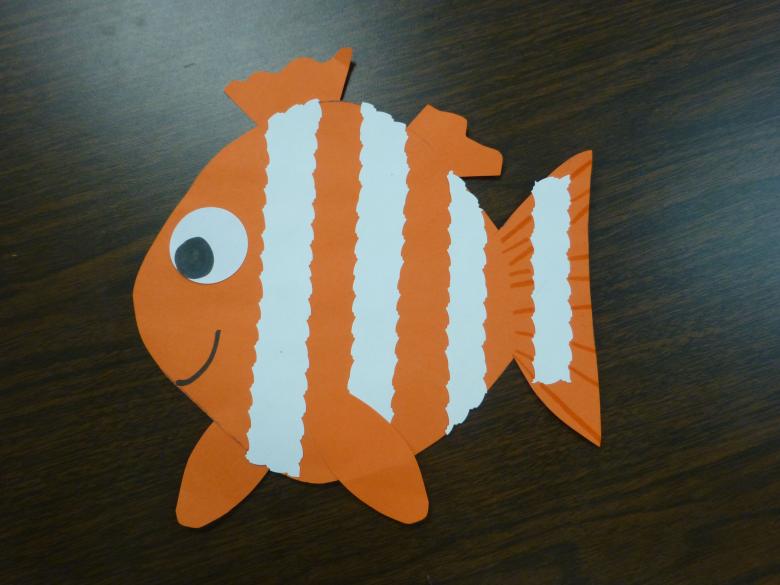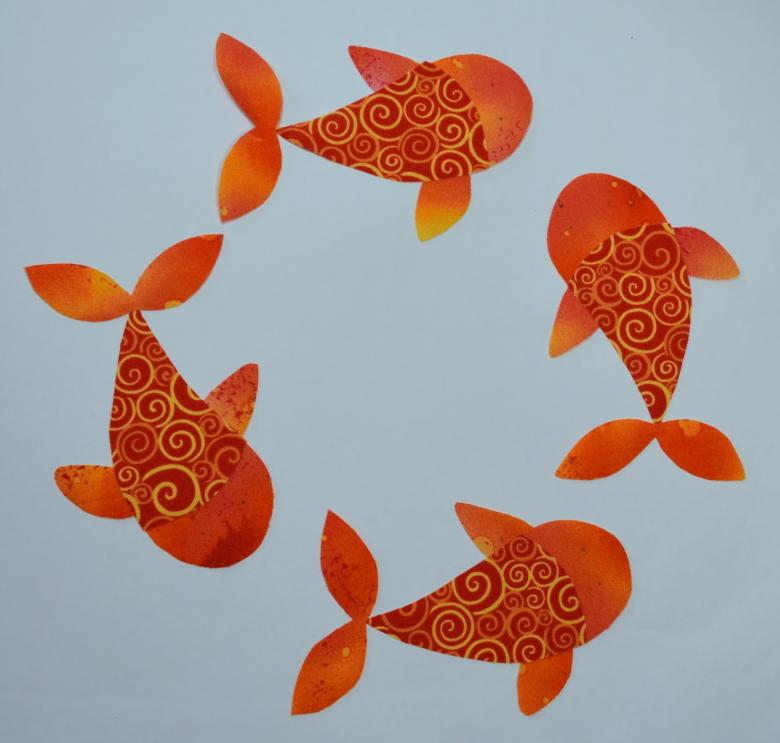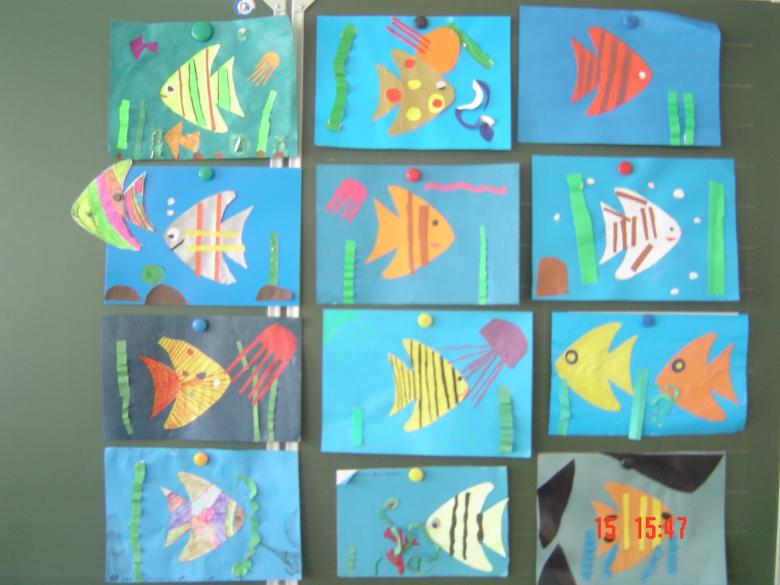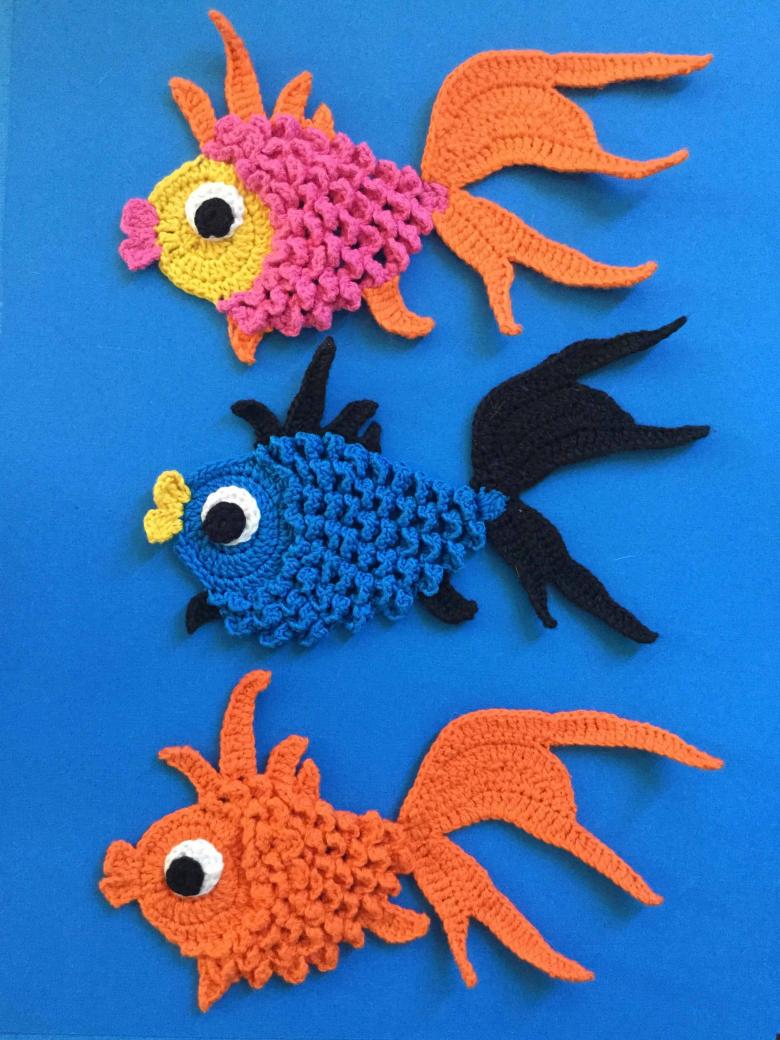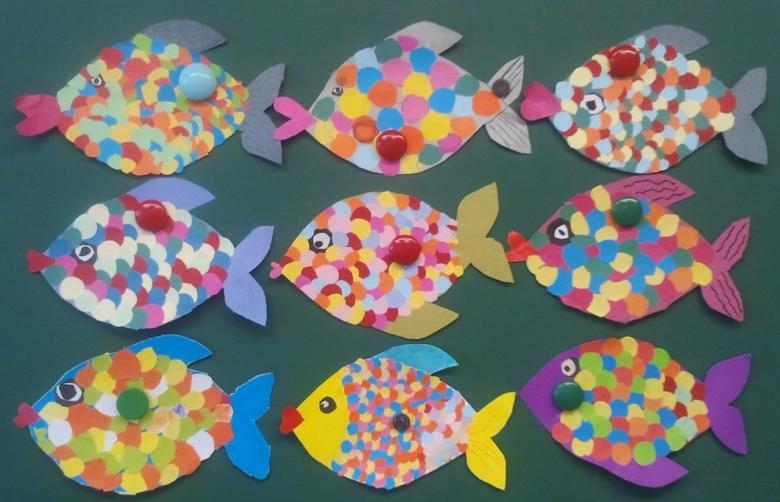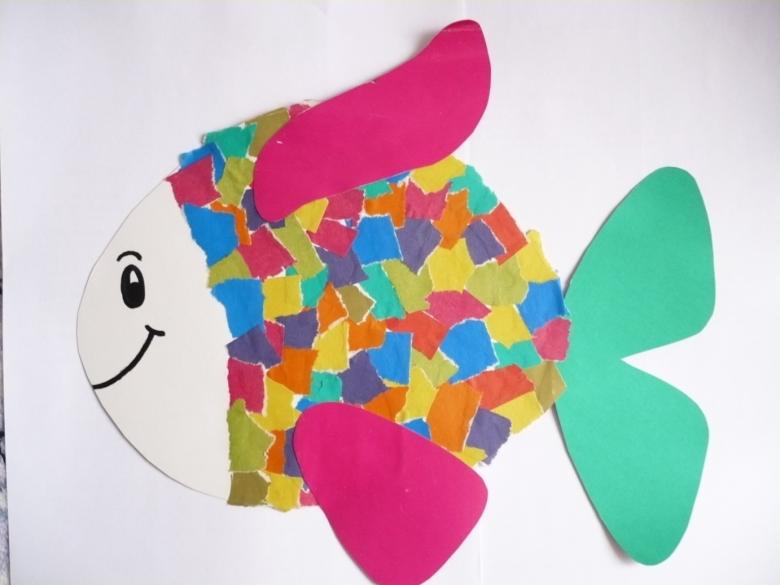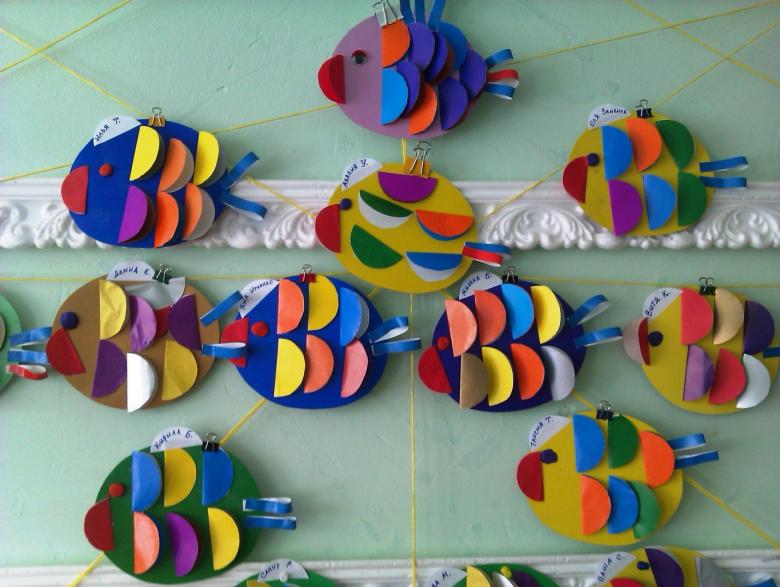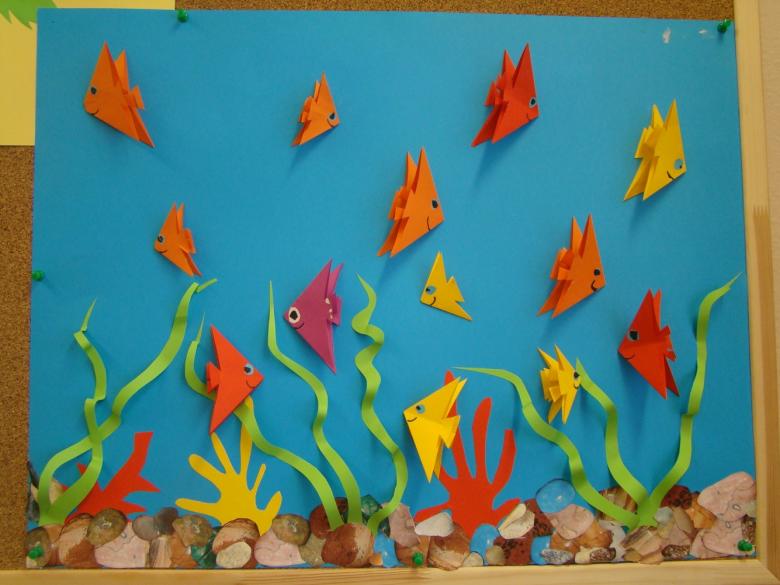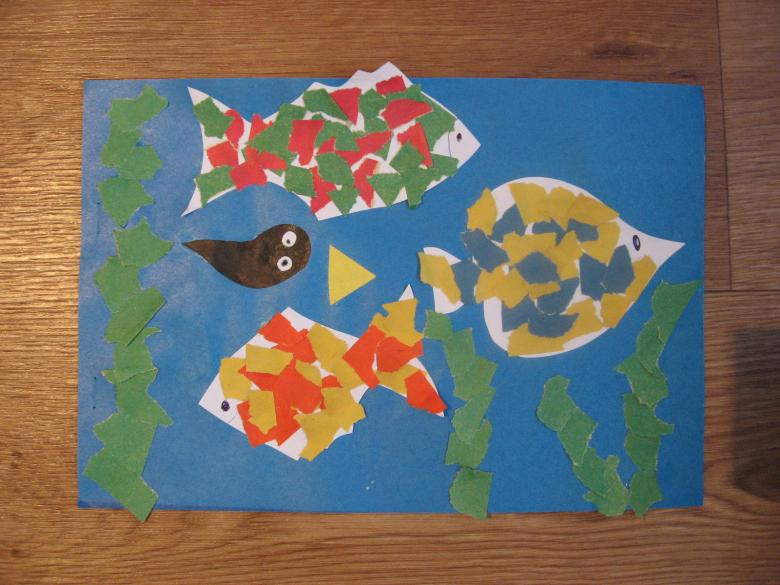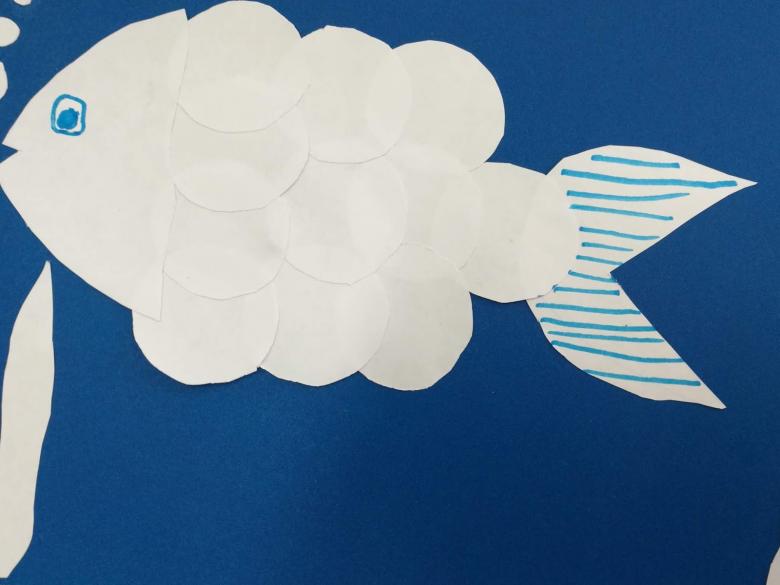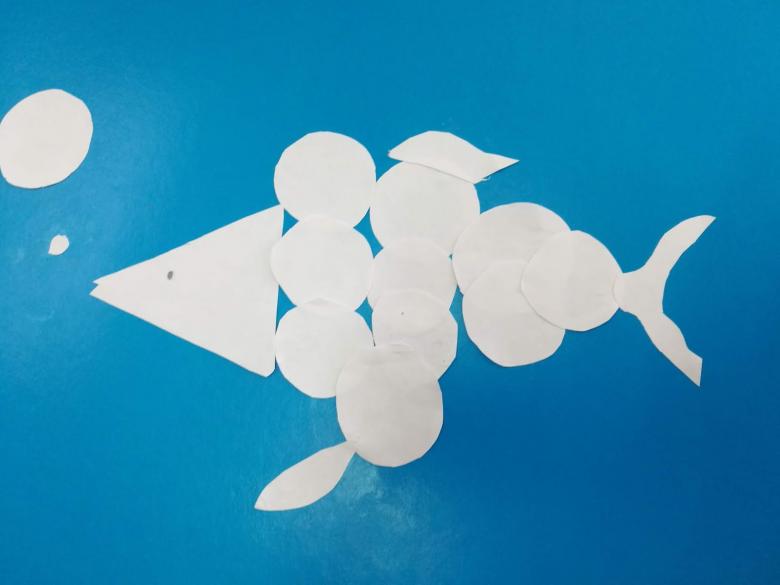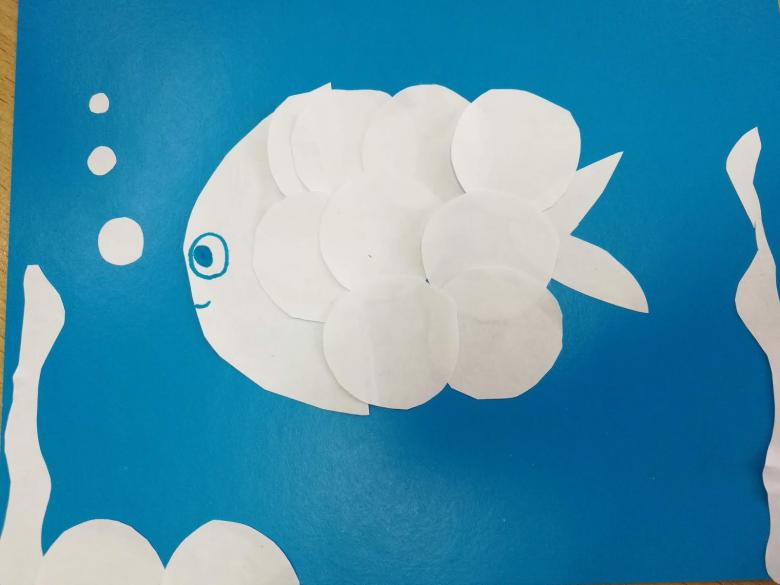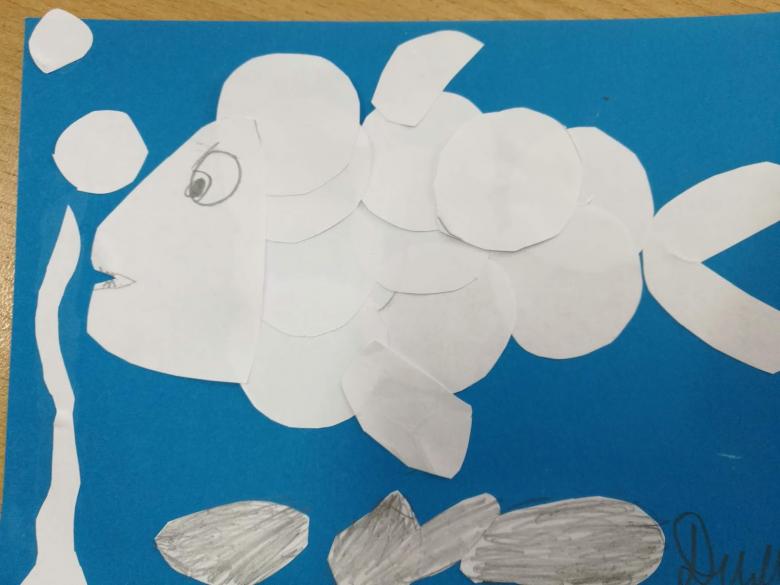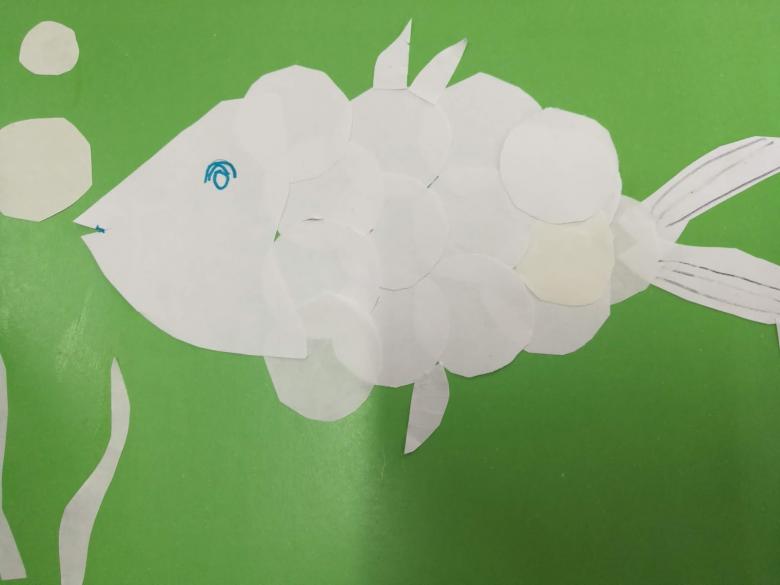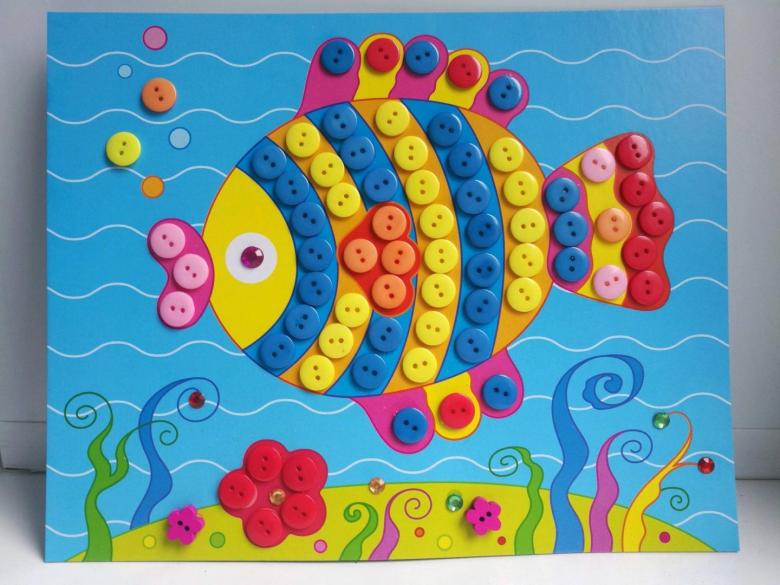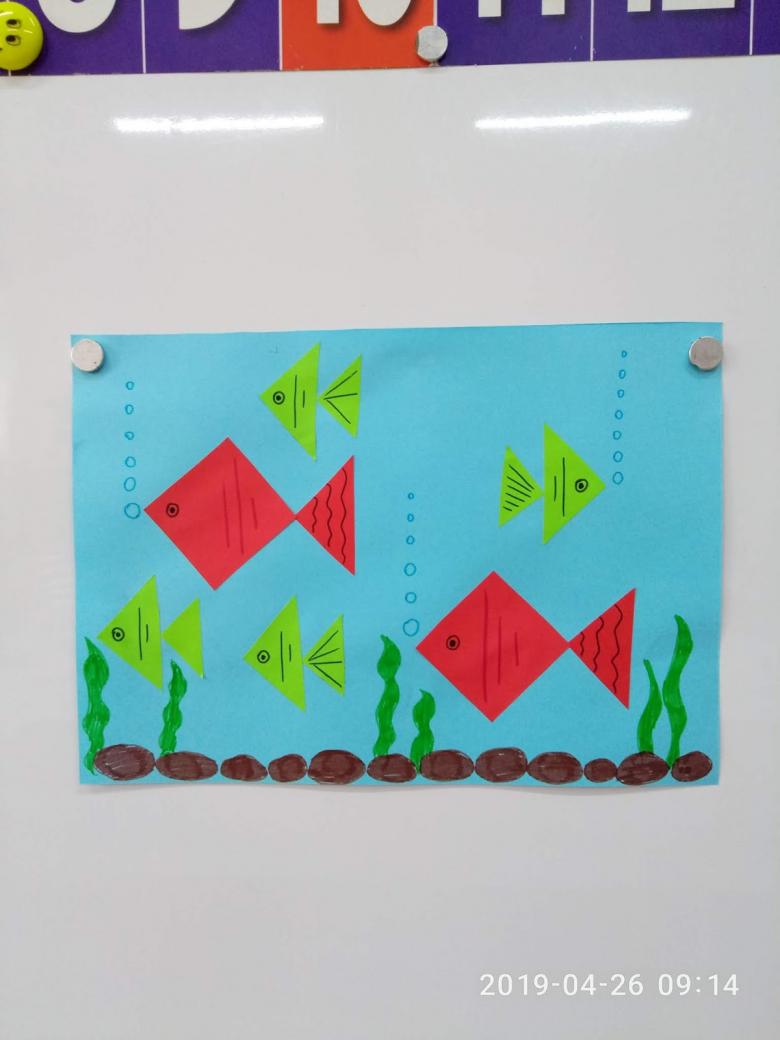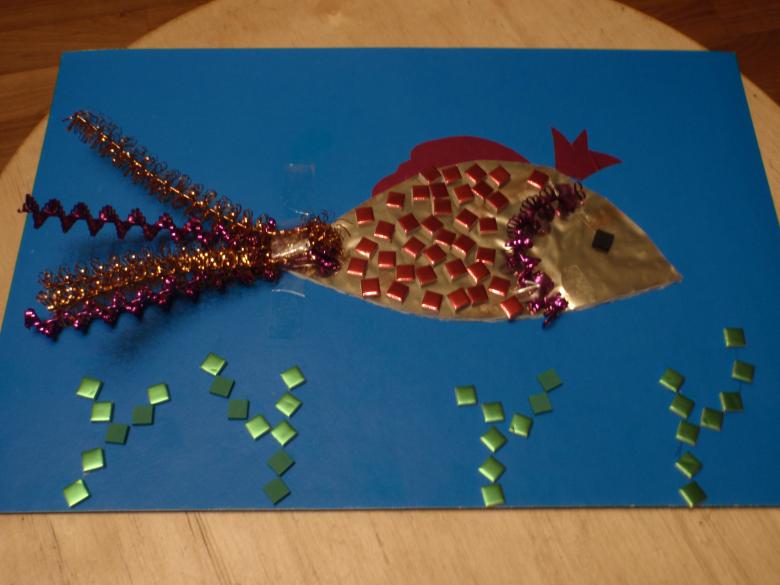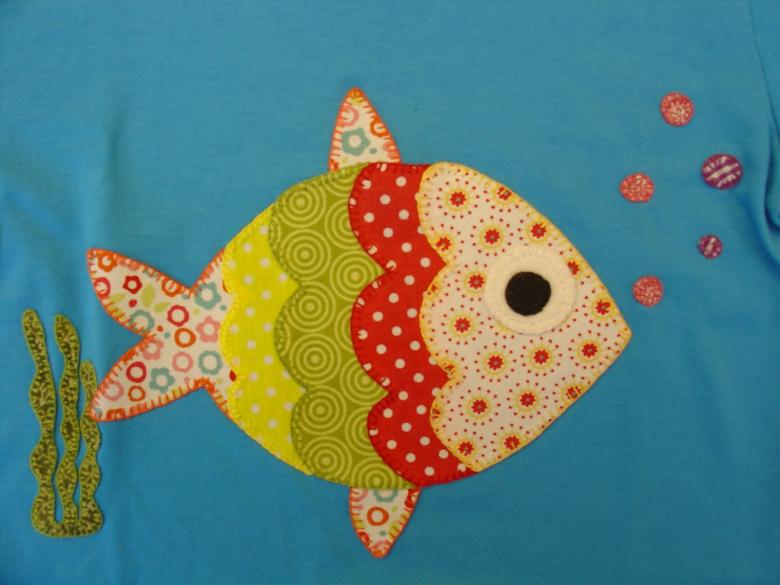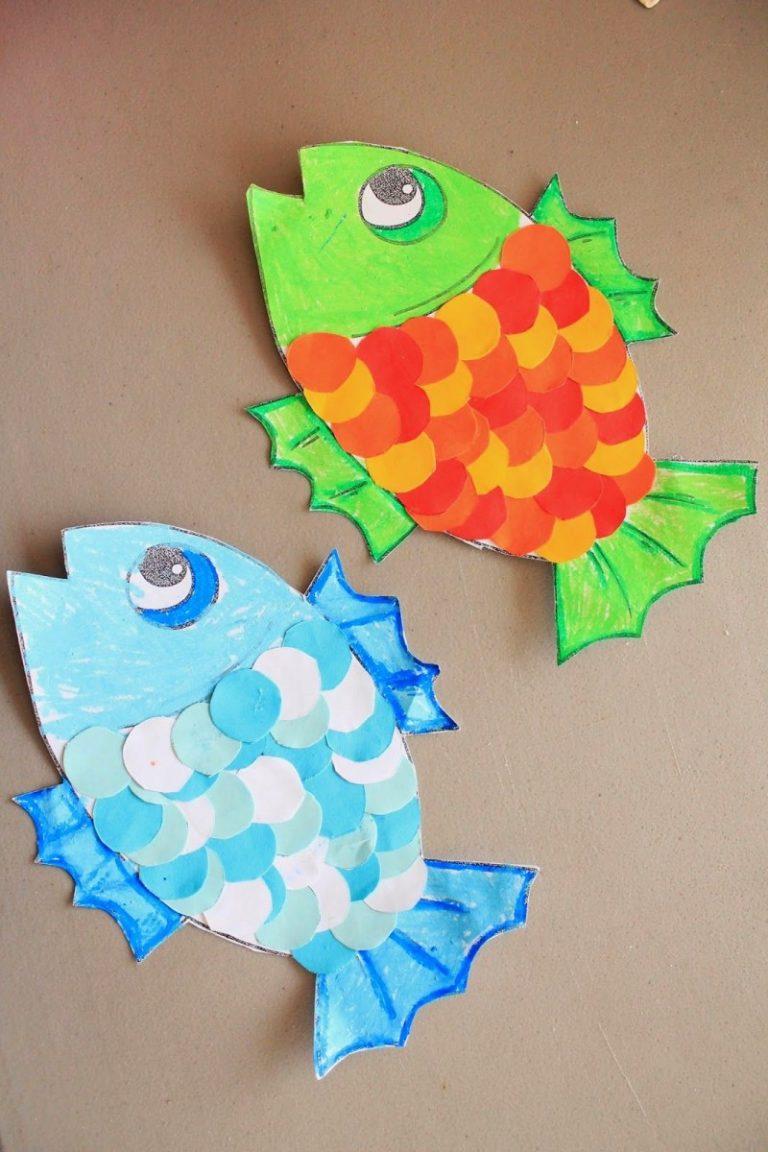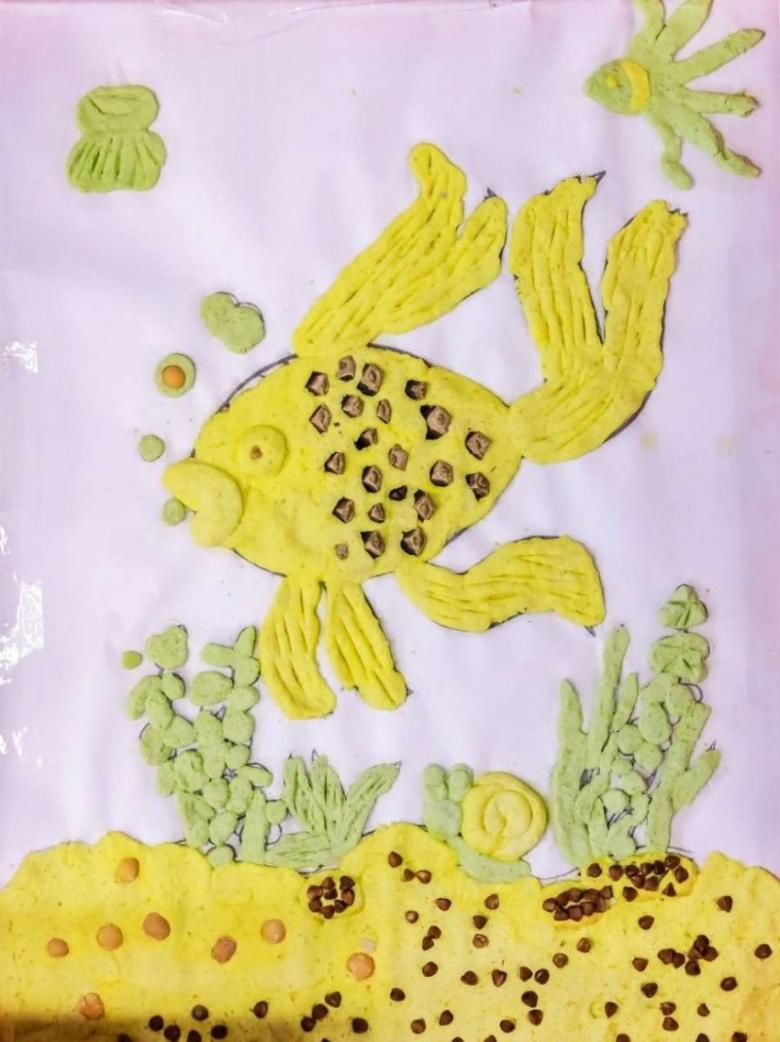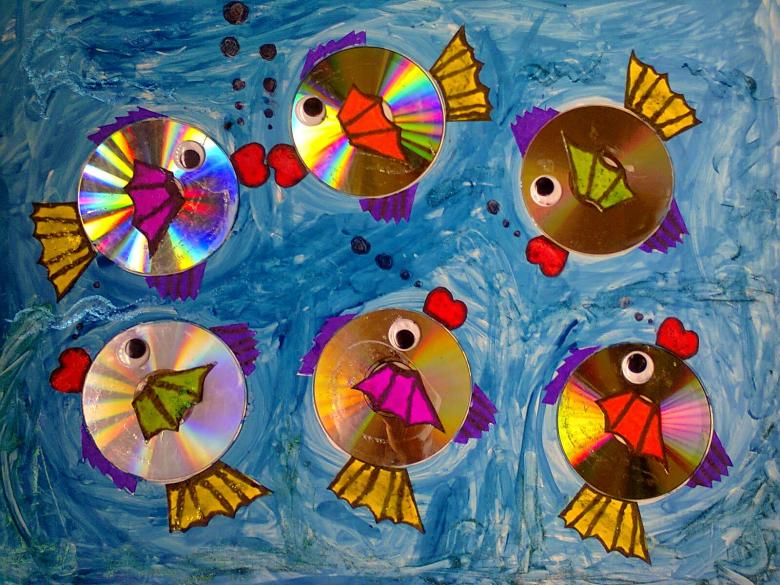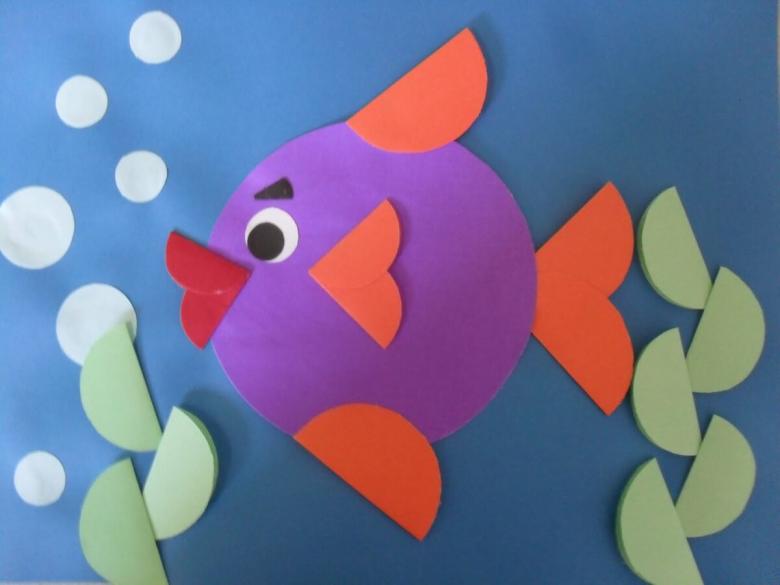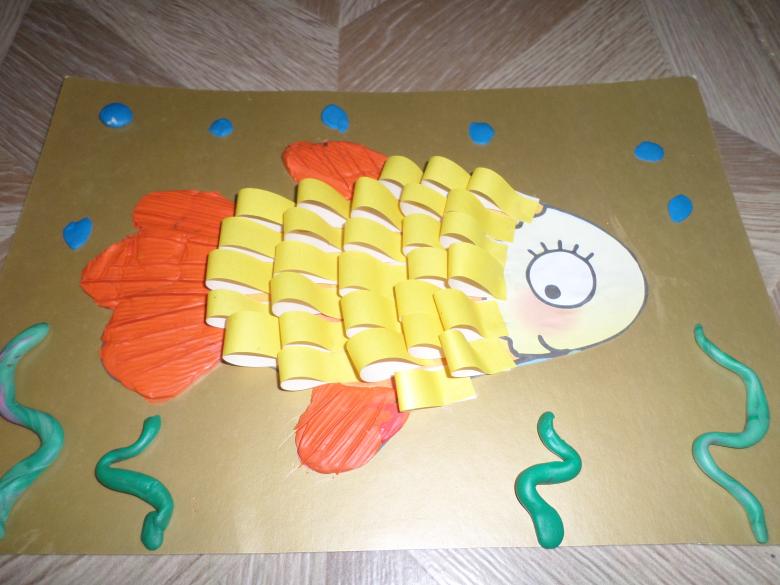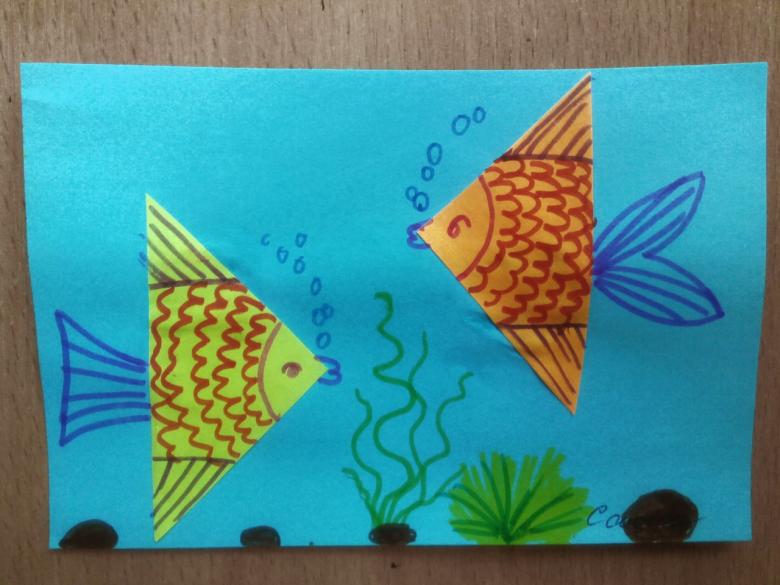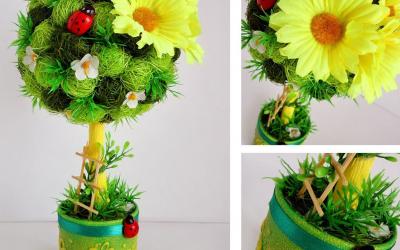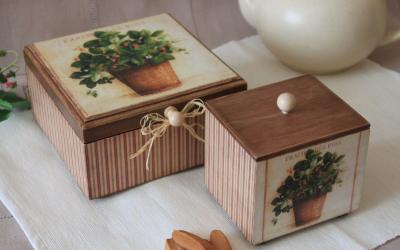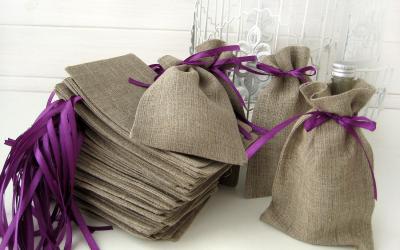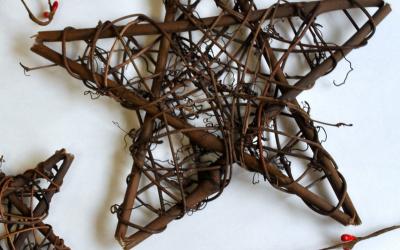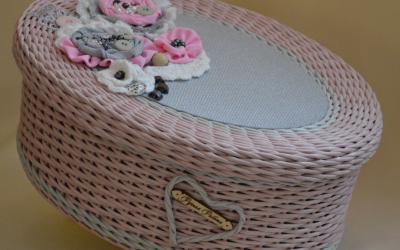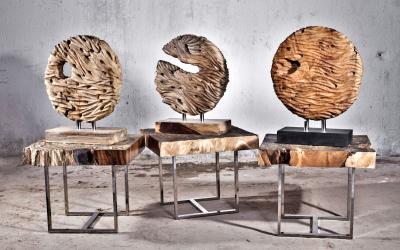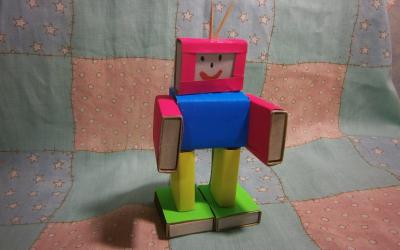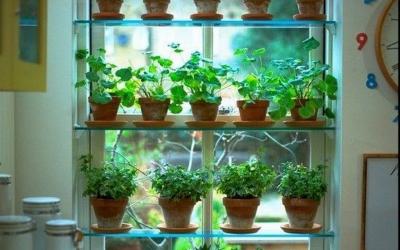Fish collage for junior, middle and senior group - step by step master classes for beginners
Classes with children in applique are carried out both in kindergartens and elementary schools, as well as part of the mandatory developmental program of children's art studios. Applique lessons are aimed at teaching the child to work with paper of different densities (regular colored paper, colored cardboard) and scissors, to master working with glue of different consistency (hard glue-pencil, liquid PVA).
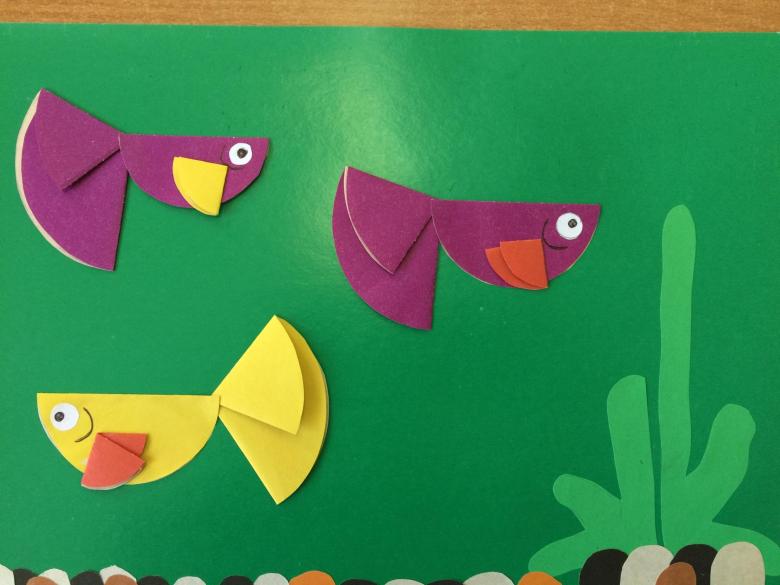
Applique lessons develop fine motor skills of a child and train coordination of eye and hand movements (when cutting out on a template), bring up a sense of composition and color combination skills.Such paper crafts not only benefit every child and solve a number of educational problems, but also give smiles to parents attending the exhibition classes.
Choosing the material
In order to choose the right material for applique, it is necessary to take into account the age of children and their skills in working with materials.
- Paper.Colored paper is the easiest and most versatile material for working with young children. Familiarity with paper occurs even before entering kindergarten: children flip through books, look at pictures, learn to work with scissors, cutting out simple shapes, all this is a preparatory stage in working with applique.
- Cardboard is a denser material than paper, but this does not prevent children from learning to work with it at an early age. On the contrary, cardboard sometimes appeals to the child more because it is not immediately amenable to cutting: sometimes it must be bent several times at the point of cutting (in the case of denser cardboard).
- Cloth can also be chosen as a material for applique. But more often such material is used by schoolchildren, as the fabric is not always malleable in work (it crumbles, is not always cut evenly). Children of kindergarten age often use it to make large parts in applications, for example: water in an aquarium.
- Plasticine. Strangely enough, plasticine can also be used for applique, it is perfectly glued and peeled off. Children like working with such a plastic material.
- Natural materials. As a material for applique, natural materials are often used: dried leaves of trees, various cones, shells. Nowadays, volumetric materials such as buckwheat, millet or rice grits, peas, seeds, tea casserole are widely used in applique. Children like working with familiar materials in an unusual form: they find it fun to glue edible materials onto a sheet of paper and create their own interesting crafts.
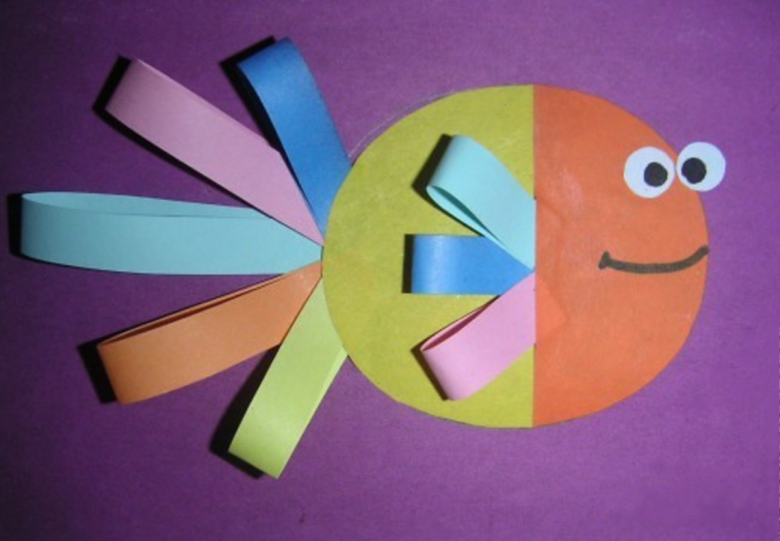
Step-by-step instructions for making applications in various techniques
Applique with the use of templates
This type is very simple to perform. Usually gluing template parts on paper is used in the younger groups of kindergartens. Children get an initial experience of applique.
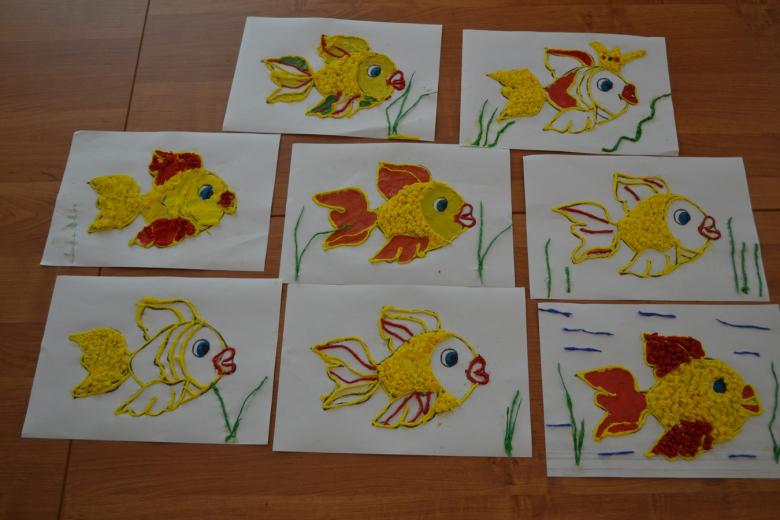
To make fish parts using templates, it is necessary to do the following:
- Prepare templates for each fish part. To do this, you need to cut out the main elements of the fish: body, scales, fins and tail from cardboard.
- Then select a suitable color of paper. Children love to make goldfish using yellow, orange or red colored paper.
- After matching the color to each pattern, you need to cut out the parts from colored paper. Each template is placed in turn on the paper of the desired color, traced with a simple pencil and subsequently cut out.
- The prepared parts are pasted with glue on a sheet of paper and a colorful applique is created. One can add details such as water in an aquarium and seaweed by drawing them with felt-tip pens or pencils.

Geometric applique: fish in an aquarium
This type of applique is used by both schoolchildren and preschoolers. The difference lies only in the choice of method of execution and in the degree of complexity of the work. Younger children in kindergartens are usually offered an introduction to shapes using various geometric shapes. For visual learning is used applique, so the child can make their own picture and at the same time learn different geometric shapes: circle, oval, square, rectangle, triangle.
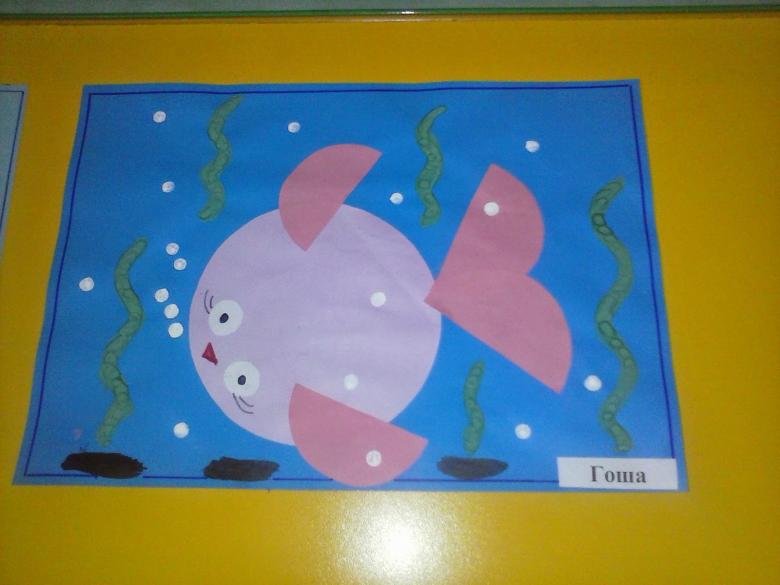
To make a fish in the technique of geometric applique it is necessary:
- Prepare templates for children, which will be the components of the fish. An oval will serve as the body of the fish, a circle will serve as scales, triangles will form the fins and tail.
- Next, choose a color that is suitable for each part. Here, the child can show his imagination, to use his photo memory, to make the best work on the application.
- All parts are cut out with scissors on appropriate geometric templates.
- Then all the templates are glued to a scrapbook sheet with glue in a certain order. Sometimes a fish is folded out of the template on the table, so that the child does not forget the sequence of gluing geometric parts.
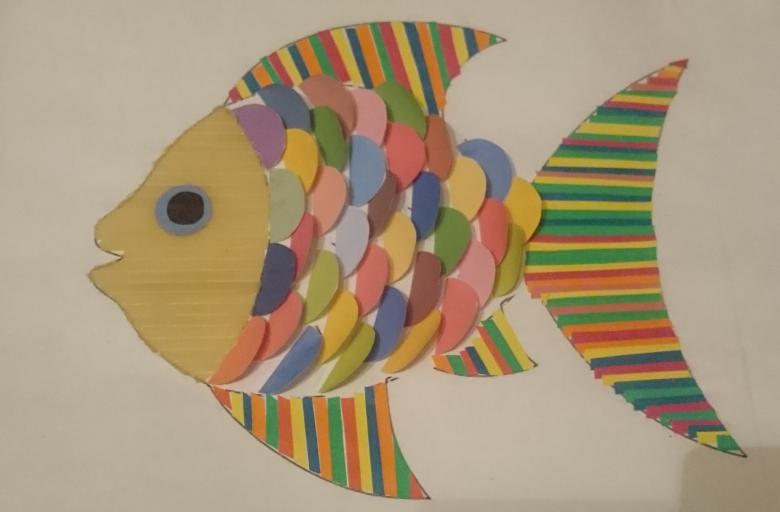
Older children use three-dimensional geometric shapes of fish made origami. Then the prepared parts as glued on a sheet of paper.
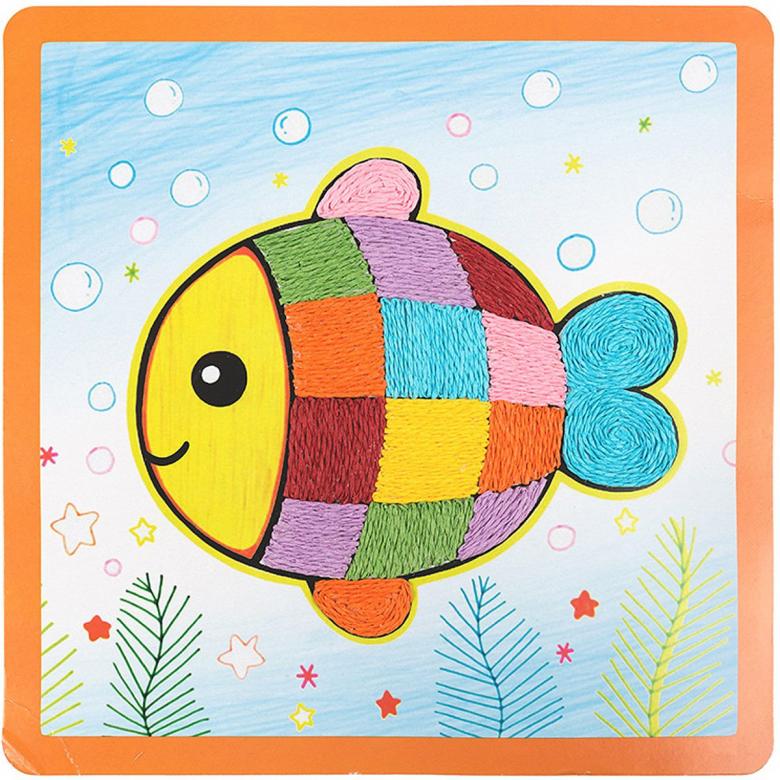
Fish in an aquarium made of fabric
Applications with fabric is conducted in older groups of kindergarten or elementary school as work with fabric is not possible for younger children. For kids, if the work is done with fabric, preparing a ready-made set of parts cut out of fabric, which then the child attaches himself to paper.
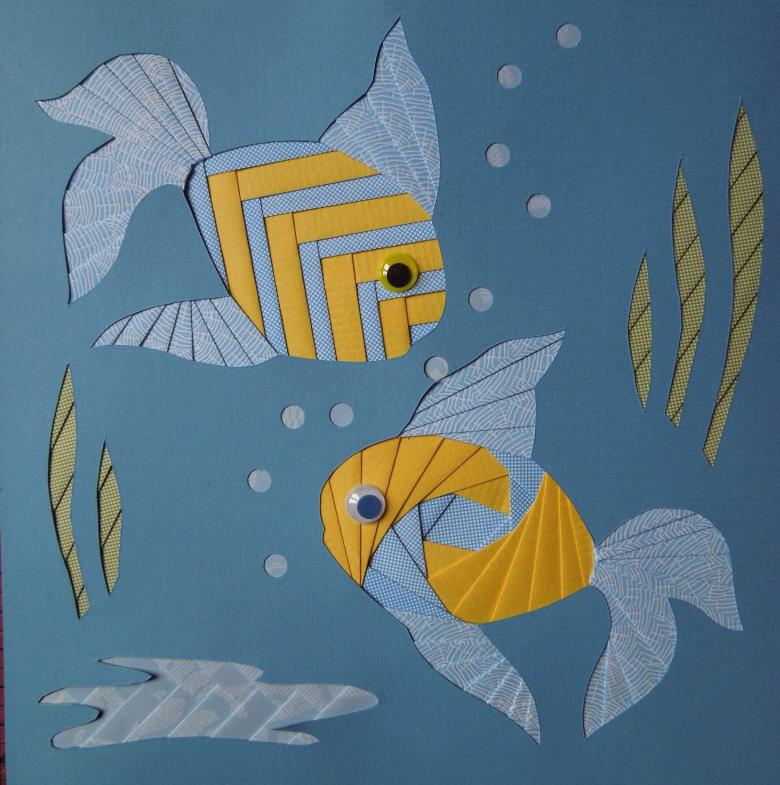
For making an aquarium with fish, the first thing to do is to prepare templates for the details of the fish, which are cut out of cardboard. Next, it is necessary to select the material. You can use fabric of varying density (cotton, silk, knitwear, felt). For water in the aquarium usually take a solid color fabric blue or blue and cut out. For the details of the fish, you can choose both monochrome fabric in different colors and fabric with different prints. The children glue all the prepared parts to the paper, forming their own unique fish.
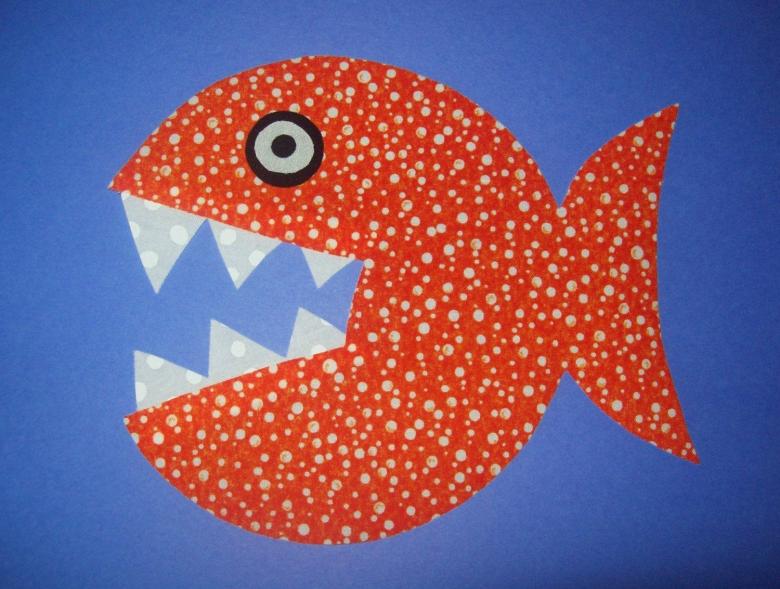
Volumetric applique from improvised materials
To make fishes from improvised materials, it is necessary to prepare very well:
- To begin with, you need to prepare a template of fish on an album sheet. To do this, an adult or the child himself draws the fish on a sheet of paper, drawing individual elements: body, head, tail, fins. For a more accurate drawing, you can use ready-made catalogs with images of fish with beautiful long tails for coloring presented on the Internet.
- Then prepare the material: peas, buckwheat, rice, colored paper and seashells.
- On a scrapbook sheet you need to mark the area of water: whether it is an aquarium or just a water space and cover it with colored paper in blue or blue, you can cut out individual waves.
- Next, it is necessary to smear the fish with glue, the most suitable in this case is PVA glue.
- The next step is to form a fish using different cereals. The body can be made of yellow colored peas, it is necessary to carefully pour the peas, without leaving voids. The area of the head can be marked with white rice grains. The eye can be made of dark buckwheat. Make the fins from mixed white rice and brown buckwheat grits, alternating strips. The head of the fish can be decorated with a crown of colored paper.
- Complement the picture can be seashells, which are glued to areas of water and seaweed, cut out of green paper.

Classes in applique only at first glance seem simple and uncomplicated to work with. But for quality performance it is necessary to carefully work out the idea of performance: to choose the material according to the age skills of the child, to prepare a set of tools for the masterful performance of the exhibition work: glue, brushes, scissors, etc. But most importantly: it is necessary to interest and involve the child in the process of independent creativity.


